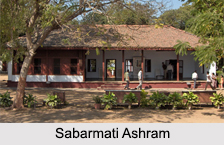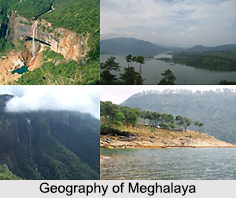 Sabarmati River is a west-flowing Indian river. It is considered to be a monsoon-fed river and is associated with the history of India and Indian mythology. It is believed that Lord Shiva brought Goddess Ganga to Gujarat which triggered the birth of Sabarmati.
Sabarmati River is a west-flowing Indian river. It is considered to be a monsoon-fed river and is associated with the history of India and Indian mythology. It is believed that Lord Shiva brought Goddess Ganga to Gujarat which triggered the birth of Sabarmati.
Geography of Sabarmati River
Sabarmati River is about 371 km in length. In Gujarat, the river extends to a length of about 323 km, while in Rajasthan the river has a length of about 48 km.
Course of Sabarmati River
Sabarmati River originates in Aravalli Mountain Range in Udaipur district of the northern Indian state of Rajasthan. The river is also called Wakal in its initial course. The river flows in a south-westerly direction across Rajasthan and Gujarat. It finally empties into the Gulf of Cambay of the Arabian Sea.
Tributaries of Sabarmati River
Tributaries of Sabarmati River are Wakal River, Harnav River, Hathmati River, Watrak River and Madhumati River.
Sabarmati River Basin
Sabarmati River Basin is situated in the mid-southern part of Rajasthan. The catchment area of the river basin is about 21674 square kilometers. The river basin extends over parts of Udaipur, Sirohi, Pali and Dungarpur districts. The Banas Basin and the Mahi Basin lie to the east of Sabarmati River basin, the Luni Basin lies to the north and the West Banas Basin lies to the west of the river. The southern boundary of the river basin borders with Gujarat.
Drainage in Sabarmati River
Drainage in Sabarmati River is controlled by the main Sabarmati River and its tributaries. The river basin drains down the slopes of the Aravali hills and the Vatrak River which rises in Dungarpur district.
Banks of Sabarmati River
 Banks of Sabarmati River has Indian cities like Ahmedabad and Gandhinagar. There is a legend related to what inspired Sultan Ahmed Shah to establish Ahmedabad. It is believed that while the Sultan was resting on the bank of Sabarmati River, the courage of a rabbit to chase a bully dog inspired him to create the city. On the banks of the river Sabarmati, Mahatma Gandhi had established the Sabarmati Ashram, during Indian freedom struggle. The banks of Sabarmati River has been converted into a walkway by Narendra Modi, the then Chief Minister of Gujarat. The walkway has been provided with rides and water activities. The development of Sabaramati Riverfront along the river banks in Ahmedabad has been based on the grounds of improvement of environment, urban development, sustainable development, etc.
Banks of Sabarmati River has Indian cities like Ahmedabad and Gandhinagar. There is a legend related to what inspired Sultan Ahmed Shah to establish Ahmedabad. It is believed that while the Sultan was resting on the bank of Sabarmati River, the courage of a rabbit to chase a bully dog inspired him to create the city. On the banks of the river Sabarmati, Mahatma Gandhi had established the Sabarmati Ashram, during Indian freedom struggle. The banks of Sabarmati River has been converted into a walkway by Narendra Modi, the then Chief Minister of Gujarat. The walkway has been provided with rides and water activities. The development of Sabaramati Riverfront along the river banks in Ahmedabad has been based on the grounds of improvement of environment, urban development, sustainable development, etc.
Surface Water Projects of Sabarmati River
Surface Water Projects of Sabarmati River are several. The existing surface water projects in Sabarmati River have facilitated irrigation to a great strength. There are only 47 minor irrigation projects in the Sabarmati River basin, along with some small irrigation systems, covering less than 20 hectares, which are constructed and operated by Panchayat Samities.
Threat to Sabarmati River
Owing to the construction of the Dharoi Dam, Sabarmati River carries only dry weather flow or wastewater flow and starts stinking. Major storm water outlets discharge sewage and waste waters from industries in the river.















